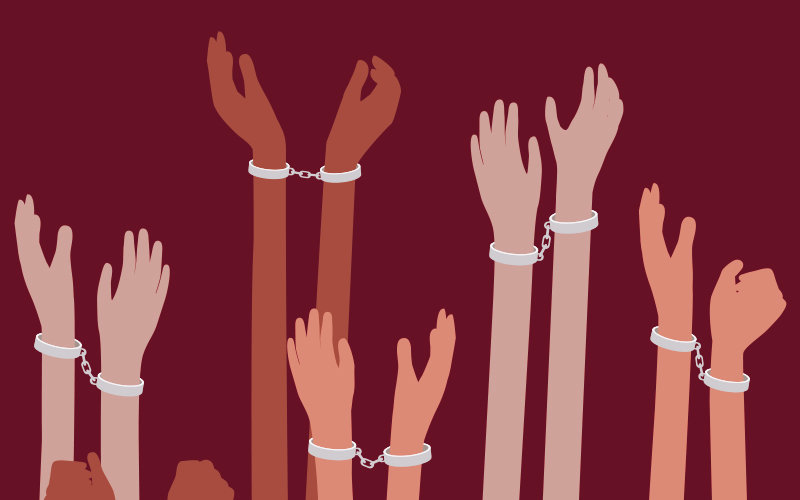
Whether sexual exploitation, labor trafficking or domestic servitude, human trafficking is happening to tens of thousands of people at every age, race and gender, and in every country.
“It’s very much present in America,” says Hannah Fraley ’11 (M.S.N. nursing leadership), assistant professor of nursing, who has focused her research on vulnerable populations, especially the victims of human trafficking. “There are approximately 300,000 youth trafficked in the United States — and those are only the identified victims.”
Her research on the prevention of youth trafficking among youth attending schools in the United States is reflected in several publications with two recent studies: “Obtaining Exposure and Depth of Field: School Nurses ‘Seeing’ Youth Vulnerability to Trafficking,” in the Journal of Interpersonal Violence, and “Systematic Review of Human Trafficking Educational Interventions for Health Care Providers,” just published in Western Journal of Nursing Research.
“Trafficking is so easy. It crosses all economic sections, every state and every town, although there is a higher risk in urban areas, more in areas of large minority populations, immigrants and those in poverty,” Fraley says, adding that “9/11 made it harder for gun and drug trafficking, but surprisingly, easier for human trafficking. It’s a multibillion-dollar industry.”
Fraley says that usually youth enter trafficking at 10 to 14 years of age but “the one thing that surprised us in our study is that survivors informed us they entered their trafficking situations at a very early age, elementary and sometimes even preschool.”
Fraley’s most recent studies have built on her research program and looked at youth in schools. Her first studies sought to find out how aware Massachusetts school nurses are aware of trafficking and their perceptions of signs that a child they may be seeing is a victim. “A lot of these kids are seen as troublemakers.
“We found in our Massachusetts study that nurses were missing the overt signs and, in some cases, we found that nurses had seen the signs but didn’t identify those signs as trafficking.
“Our studies reinforce the need of bringing awareness of the issue to school personnel,” Fraley stresses. “It’s only through awareness that our attitudes will shift from ‘troubled kids’ to ‘victims.’
“Often girls, boys and LGBTQ children will run away or are throwaways — kicked out of their homes — and disappear for weeks … Nurses often know this but don’t realize they are highly at risk for trafficking,” she notes. “I think for some it’s a form of self-preservation: ‘if I don’t know, I don’t have to handle it.’
“That’s why we want to start working with a whole educational team,” said the researcher. “Not to shame anyone, but give them the tools to handle the situation, to respond.”
Fraley is conducting a national study of school nurses examining their awareness of trafficking and perceptions toward youth most at risk, and hopes to soon begin working with area school districts. She will partner with colleagues from University of Massachusetts, Boston; Amirah, Inc., a national agency serving survivors of trafficking; and colleagues from CSUF’s College of Health and Human Development and College of Education to develop a program that can be offered to school nurses, teachers, school staff, administrators and youth.
“Human trafficking exists everywhere around us, every day, especially with children who don’t have the voices to speak up for themselves,” she says. “This is why awareness is so important. It is unacceptable that this is going on — that these children are going to school every day, freely walking on our city streets but are mentally in bondage through coercion of traffickers.
“I think we all have the responsibility to do something about it.”